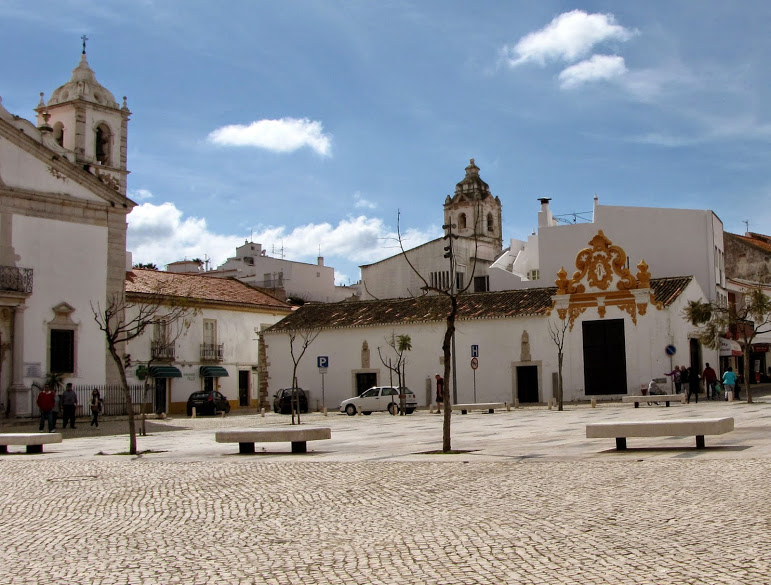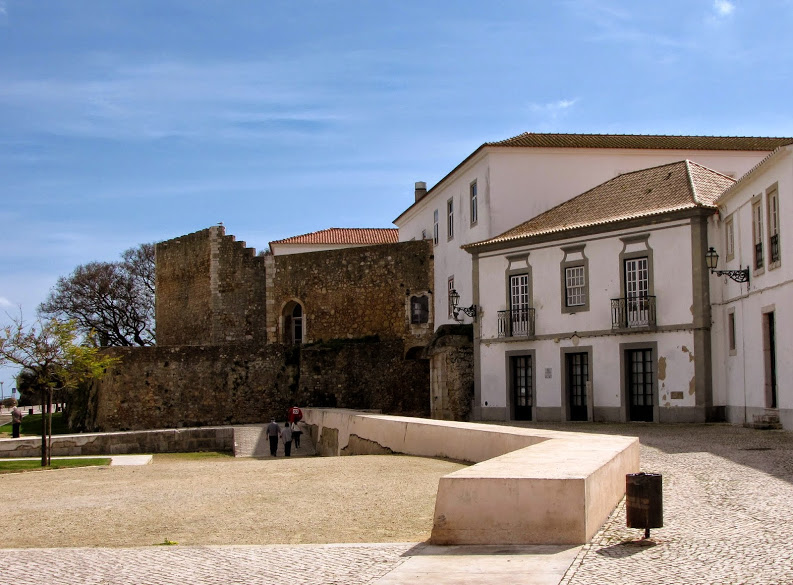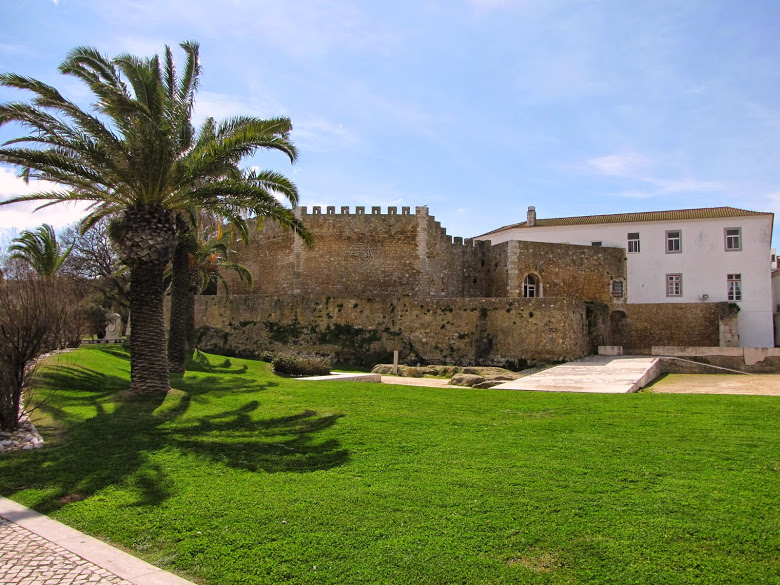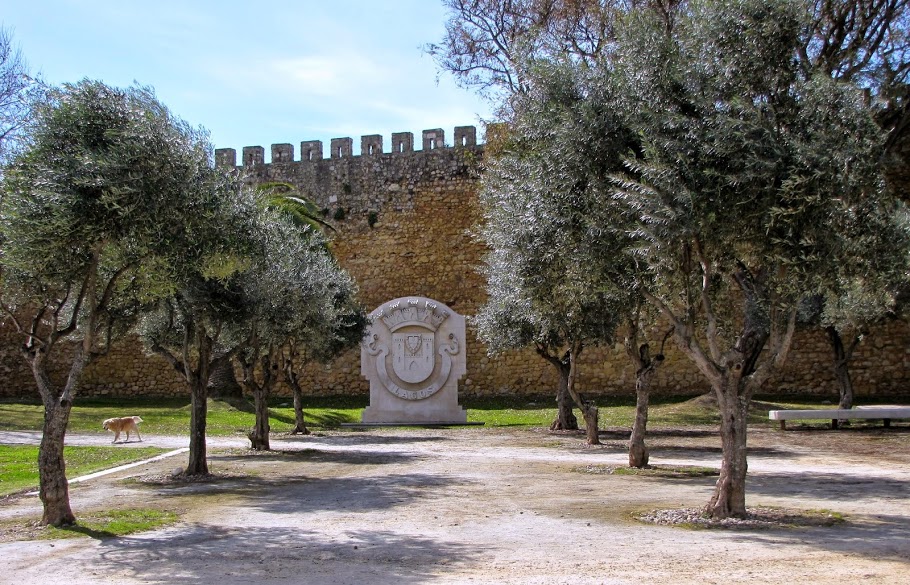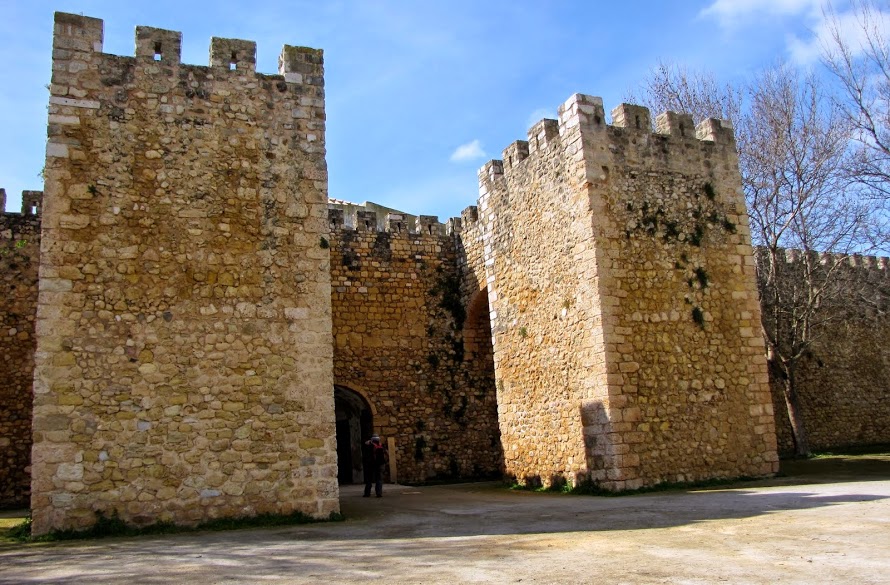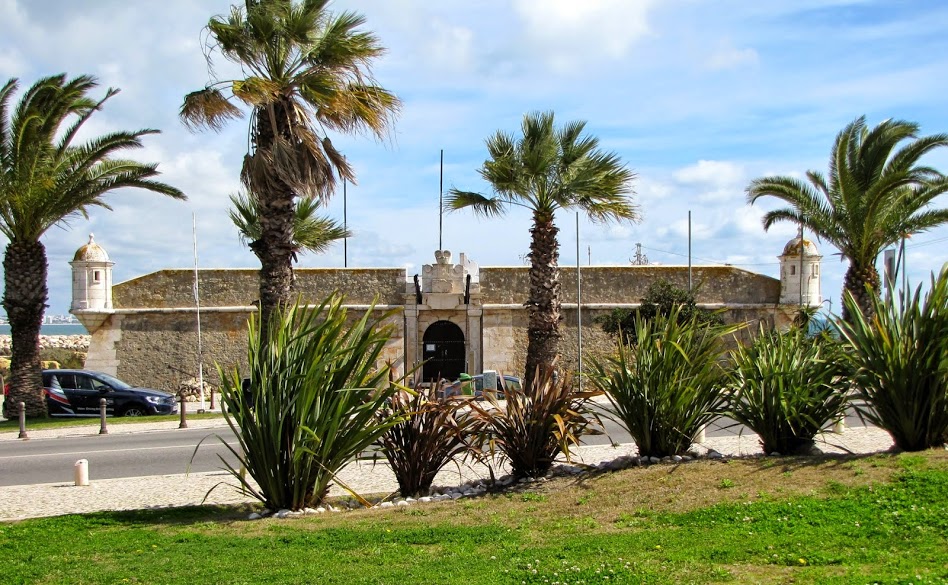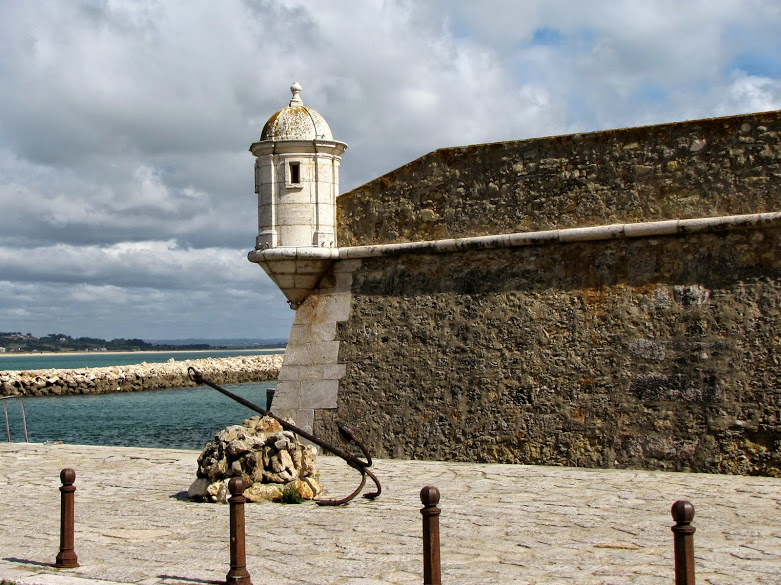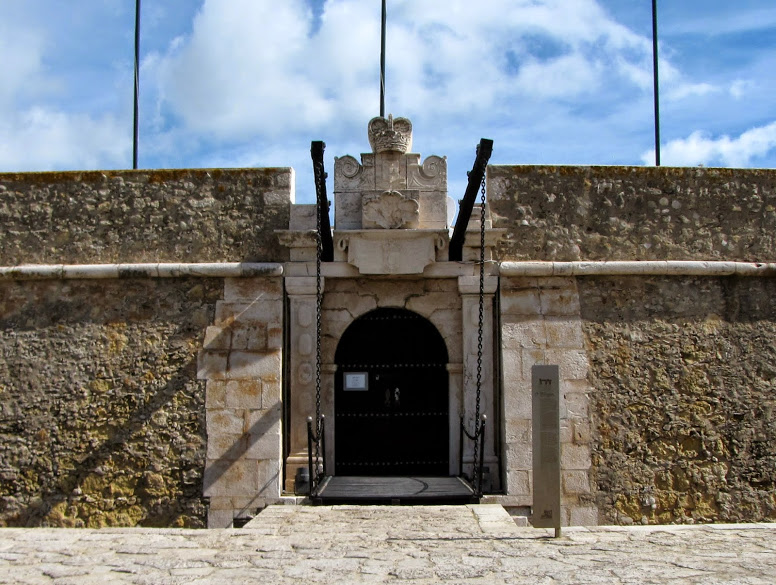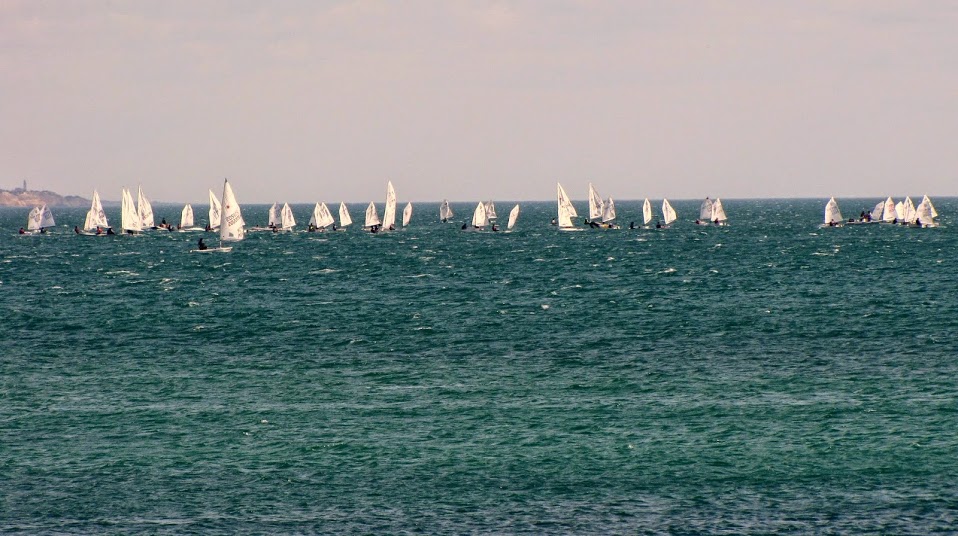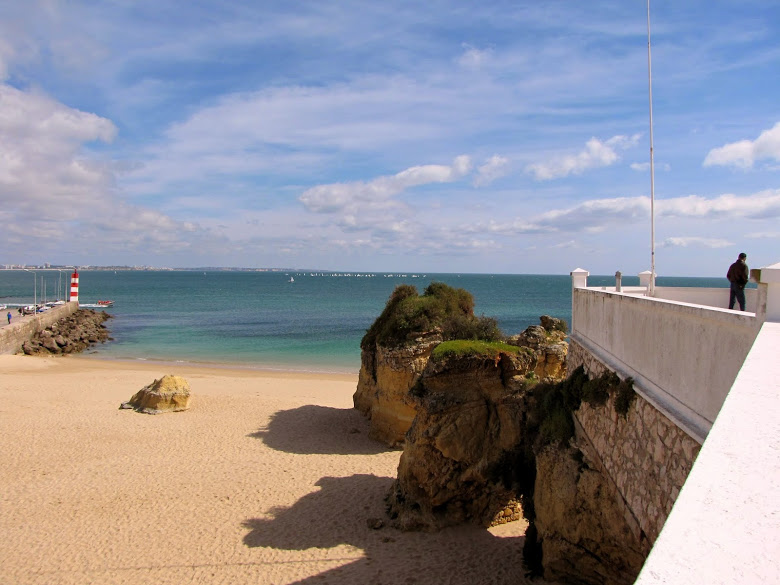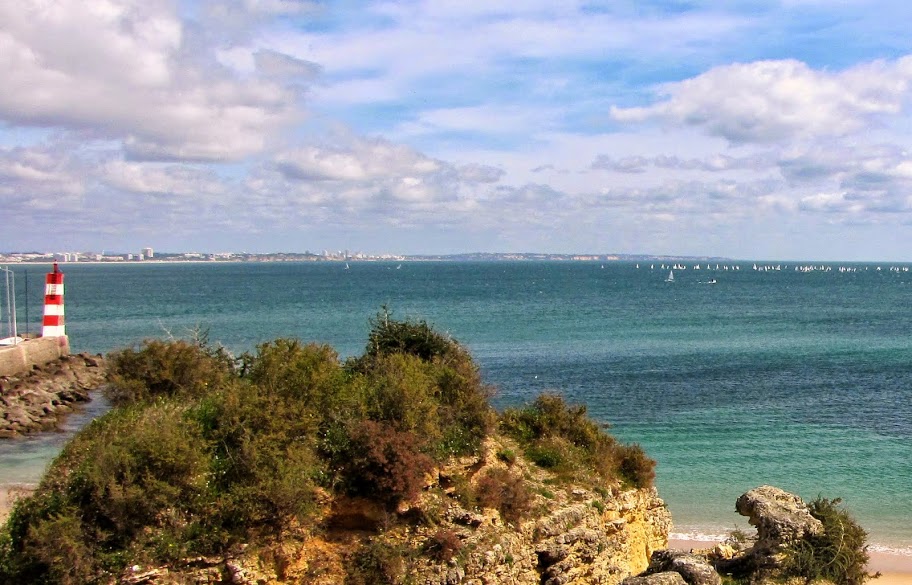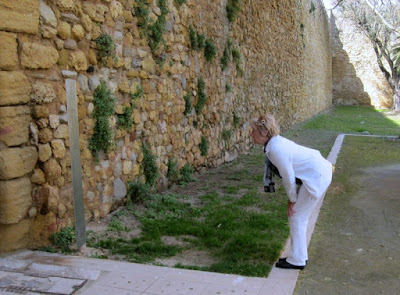It was decided to go to Lagos and Sagres at the far western end of Algarve. At the end we only managed Lagos as there were many thing to see, so before we leave we will have to do the 140 kilometers to Sagres as I do not want to miss it.
WE got onto the highway and did our 100 kilometers to Lagos, found a parking in the center (luckily there was a covered garage as on the street parking does not exist in the center (only for residents).
OK! First thing first..a coffee and what do we see right at the of the street what looked like nice cafè
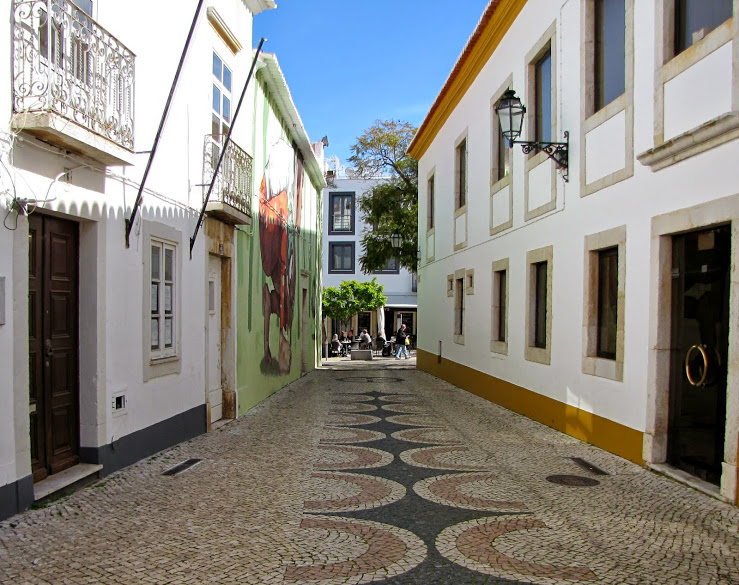
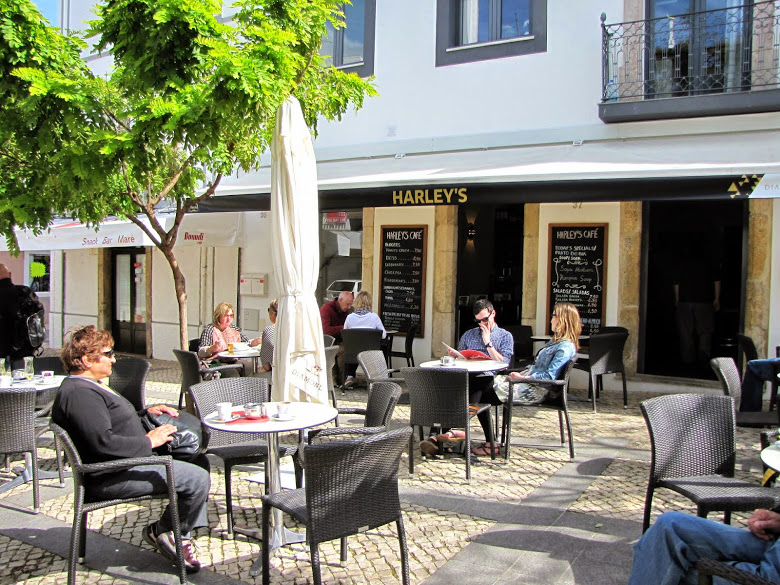
The most expensive coffee we have had
Right next door the famous
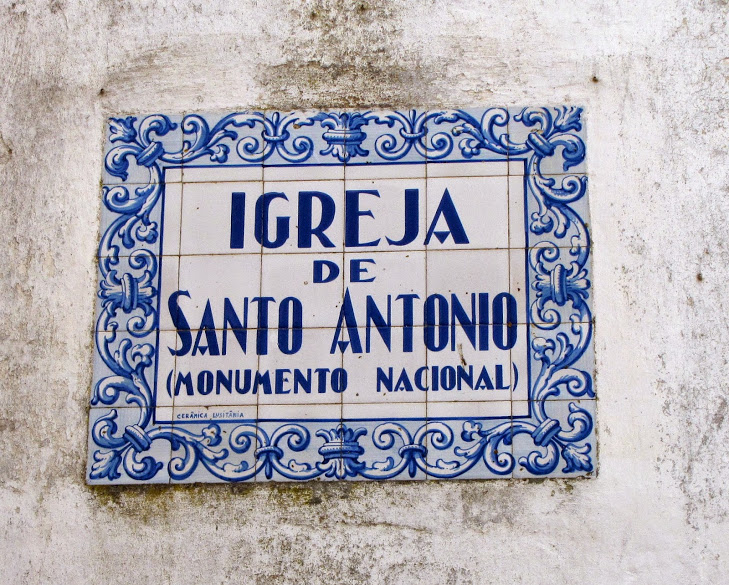
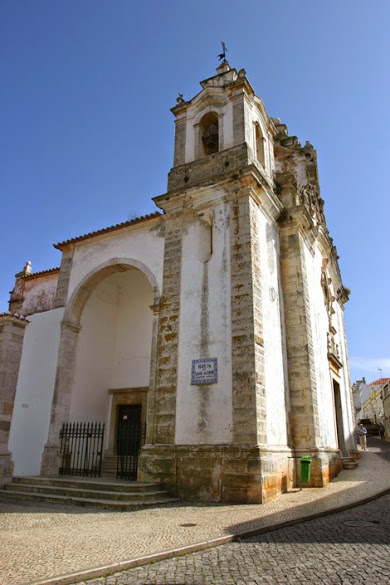 (pic from internet. It was being restored and was all covered up)
(pic from internet. It was being restored and was all covered up)The Church of St. Anthony (Igreja de Santo Antonio) was built in 1707 and rebuilt on an initiative of the command of Lagos infantry regiment after the earthquake that destroyed most of the building in 1769. Today it represents a fine example of Portuguese Baroque architecture, where the simplicity of its exterior is contrasted by the richness of its decorative interior.
The altarpiece, which survived the quake, was commissioned in 1718 to the woodcarver Gaspar Martins with the remainder of the carvings assigned to woodcarver Custódio Mesquita. The gilded altar features the patron saint Santo António who stands with a boy in arms. The roof is an imitation of a barrel vault featuring a painting of the Portugal coat of arms in the centre. The walls feature 8 pictures depicting the miracles of Santo António. And on the pavement of the Church, stands the headstone of Hugo Beaty, the commander of Lagos infantry regiment at the time and the man responsible for the reconstruction of the Church in 1769.
Pieces of the original tiles exposed at the entrance
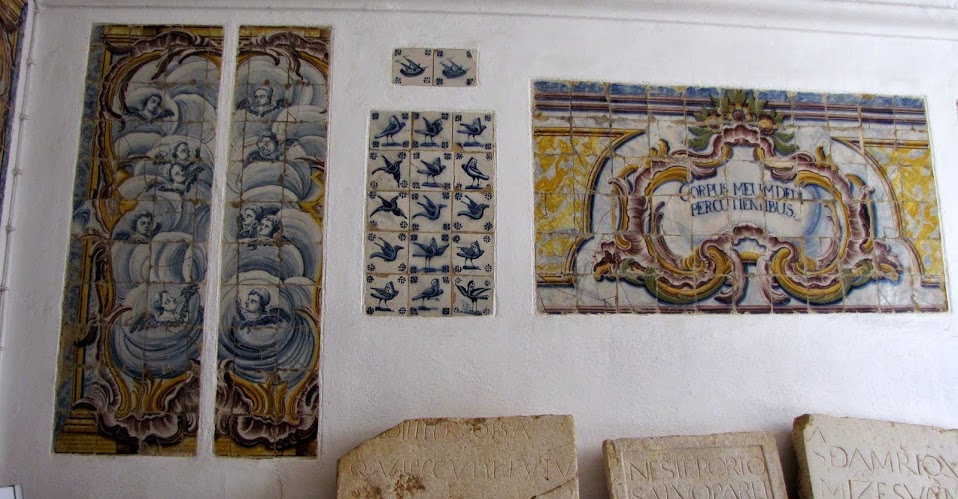
I love these old tiles, especially the blue and white ones with the birds. I have been trying to find some, but they cost a small fortune. Anyway I would ot know where to put them
The photo of the inside is from the Internet, as it is prohited to take photos inside.

The rest of the church building is a small museum without anything too interesting.
Mini models of Algarve entrance doors

A typical Street in Lagos. The building on the right hand side once was the slave market, the first in Europe
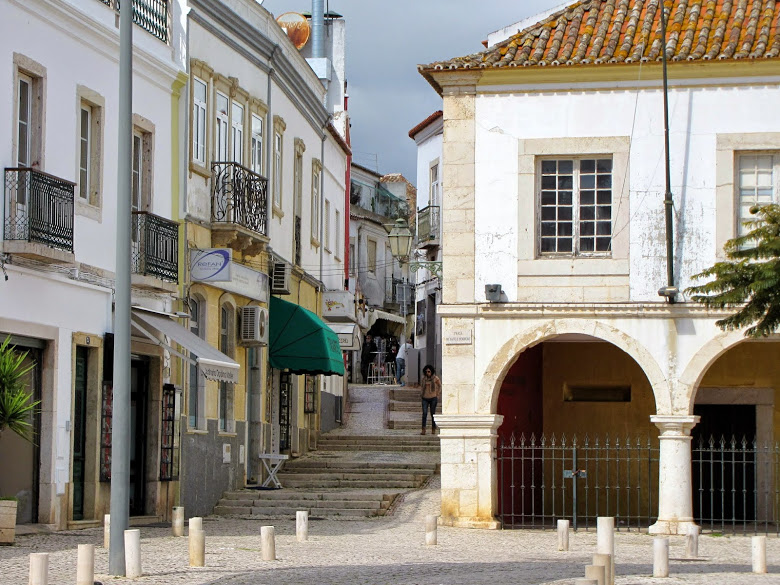
The church of Santa Maria (Igreja de Santa Maria de Lagos) was originally constructed in 1498 and was once known as the Church of Mercy (Igreja da Misericórdia). It wasn't until later in the 16th and 17th centuries, after much of the original church was destroyed by the earthquake of 1755, that a parish church was established and dedicated to St. Mary (Santa Maria).
The building as it stands today is a fine example of neoclassical architecture composed of a single nave with three side chapels and a sacristy attached to the left side of the facade. The front of the building has a very symmetrical composition while the inside is decoratively enriched with altarpieces from the second half of the 18 century.

It is situated on a big square close to the sea and the fortress and on the other side of the square a statue of

One of the famous potuguese explorers
Infante Dom Henrique de Avis, Duke of Viseu (4 March 1394 – 13 November 1460), better known as Henry the Navigator (Portuguese: Henrique, o Navegador) was an important figure in 15th-century Portuguese politics and in the early days of the Portuguese Empire. Through his administrative direction, he is regarded as the main initiator of what would be known as the Age of Discoveries. Henry was the third child of the Portuguese king John I and responsible for the early development of Portuguese exploration and maritime trade with other continents through the systematic exploration of Western Africa, the islands of the Atlantic Ocean, and the search for new routes.
King John I was the founder of the House of Aviz. Henry encouraged his father to conquer Ceuta (1415), the Muslimport on the North African coast across the Straits of Gibraltar from the Iberian Peninsula. He learnt of the opportunities from the Saharan trade routes that terminated there, and became fascinated with Africa in general; he was most intrigued by the Christian legend of Prester John and the expansion of Portuguese trade. Henry is regarded as the patron of Portuguese exploration.
From the Order of Christ`s headquarters in Tomar, where Henry had all the infrastructure (expanding it in his administration), the documentation and his cosmographic center, as well as from his Vila do Infante (in 15th Century Portuguese, "Estate or Town of the Prince") on the Sagres peninsula, located at the southwesternmost point of Iberia and with sea access to both the Atlantic and the Mediterranean, Henry sponsored voyages down the coast of Africa. These voyages went as far as Guinea and were primarily expeditions of exploration; later on they brought back to the nearby town of Lagos, from whence they set out, numerous African slaves and goods.
Until Henry's time, Cape Bojador remained the most southerly point known to Europeans on the unpromising desert coast of Africa, although the Periplus of the Carthaginian Hanno the Navigator described a journey farther south about 2,000 years earlier.
As a second fruit of this work João Gonçalves Zarco, Bartolomeu Perestrelo and Tristão Vaz Teixeira rediscovered the Madeira Islands in 1420, and at Henry's instigation Portuguese settlers colonized the islands.
In 1427, one of Henry's navigators, probably Gonçalo Velho, discovered the Azores. Portugal soon colonized these islands in 1430.



